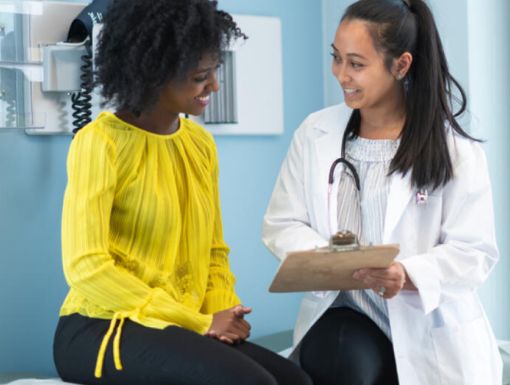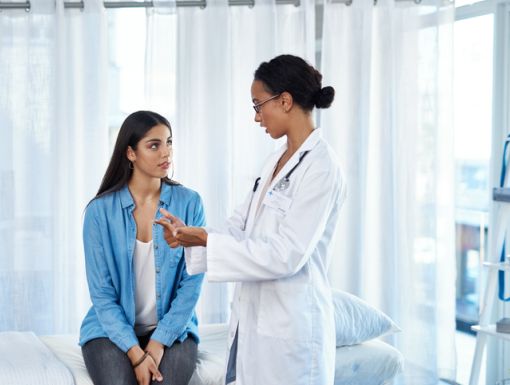
If You’re Black and Have Endometriosis, Here Are 3 Things You Should Know
Endometriosis is a health condition that can cause a lot of pain and affects many women around the world. For Black women, this condition can be different. They might have other symptoms and face challenges in getting diagnosed and treated. Understanding these differences is necessary for Black women to get the right help and information. This knowledge helps them manage their health with confidence and strength.
What is endometriosis and its symptoms?
Endometriosis is where tissue, like the lining inside the uterus, starts growing outside of it. This can lead to pain, swelling and sometimes problems with having children. Although many people have endometriosis, it often isn't diagnosed or treated correctly in Black communities.
The first step to getting the correct diagnosis is to understand the symptoms. For many Black women, these symptoms can be serious and difficult, affecting their overall health.
- Severe pelvic pain: Pelvic pain is a common sign of endometriosis. This pain doesn't just show up during periods; it can happen at other times, too, making it very uncomfortable.
- Heavy menstrual bleeding: Black women with endometriosis often deal with irregular bleeding, like having heavy periods or bleeding at times between their periods.
- Pain during intercourse: Feeling pain during or after sex is a tough symptom that can happen. This might affect a person's relationships and make them feel lonely and upset.
- Stomach issues: Endometriosis can cause symptoms that feel like stomach issues, such as feeling sick, being bloated and having pain when using the bathroom. These symptoms can sometimes confuse doctors, leading to a wrong or late diagnosis.
- Fertility challenges: Many Black women with endometriosis find it hard to get pregnant. This condition can affect their ability to have children in different ways. It's important for those with symptoms to see a specialist early on.
What problems do Black women face when trying to get a fair diagnosis and treatment for endometriosis?
Endometriosis affects about 11% of American women who can have children. However, recent studies highlight a concerning trend: Recent studies have found that Black women are 50% less likely to be diagnosed with this condition compared to white women. This shows that Black women often face unfair treatment, leading to fewer diagnoses and less treatment.
Black women can have a tough time getting the proper diagnosis. For example, 40% of Black women first told they had pelvic inflammatory disease (PID) had endometriosis.
Black women often face difficulties getting quick and correct diagnoses for endometriosis. Studies suggest that racial bias can cause doctors to ignore the pain and symptoms Black women report. This results in delays in finding out what’s wrong and getting treated. Understanding these unfair differences is the first step in standing up for oneself and finding healthcare providers who promise fair treatment for everyone.
New technology and procedures are helping to improve endometriosis care. Scientists are developing special imaging techniques to help doctors detect endometriosis earlier and more accurately. New tools like improved ultrasounds and advanced MRI scans are helping physicians see endometriosis better and faster. Nanotechnology is a new science that deals with tiny particles too small to see with the naked eye. Researchers are discovering how it could help treat endometriosis by finding and removing painful spots in the ovaries, fallopian tubes and pelvis without surgery. This could make treatment safer and easier for many women.
What is the role of genetics and the environment on endometriosis?
Recent research shows that both genetics and the environment can play a part in causing endometriosis. Black women might have specific genes that affect how bad their symptoms are and how well treatments work for them. Also, getting good healthcare, exposure to particular environments and dealing with stress can worsen the condition. For example, exposure to certain chemicals in everyday products or pollution can negatively affect our health and worsen endometriosis. These chemicals can disrupt the body's work, increasing the risk of more severe symptoms.
Stress is another factor that can make endometriosis symptoms feel worse. Stress can come from many places, such as school, work, or personal issues. Some good ways to manage stress include exercising, which helps release tension or talking to someone you trust, like a friend, family member or counselor. These strategies can help keep stress under control and improve overall well-being.
Studies examining how genes and the environment affect endometriosis are critical. These studies can help create treatment plans that are just right for Black women. By giving Black communities more information about the risks and signs of endometriosis, we can help them take better care of their health and well-being.
What are some ways people with endometriosis can handle challenges with having children?
Endometriosis can cause problems for some women who want to have children. Many Black women with endometriosis worry about this. It's important to know there are different ways to manage endometriosis. Doctors might suggest trying various medicines, and for those who want to have children, there are medical treatments that can help. Understanding these options can be a big step in dealing with the condition.
Building strong support systems within communities can provide emotional and valuable assistance to Black women facing fertility challenges due to endometriosis. Support groups, educational workshops and advocacy initiatives can play a vital role.
Endometriosis can be difficult for Black women because they might struggle to get the correct diagnosis and treatment. By doing more research, finding new treatments and offering strong community support and education, we can help Black women manage endometriosis better.
Learn more about Katherine Ayo-Rayburn, MD.



